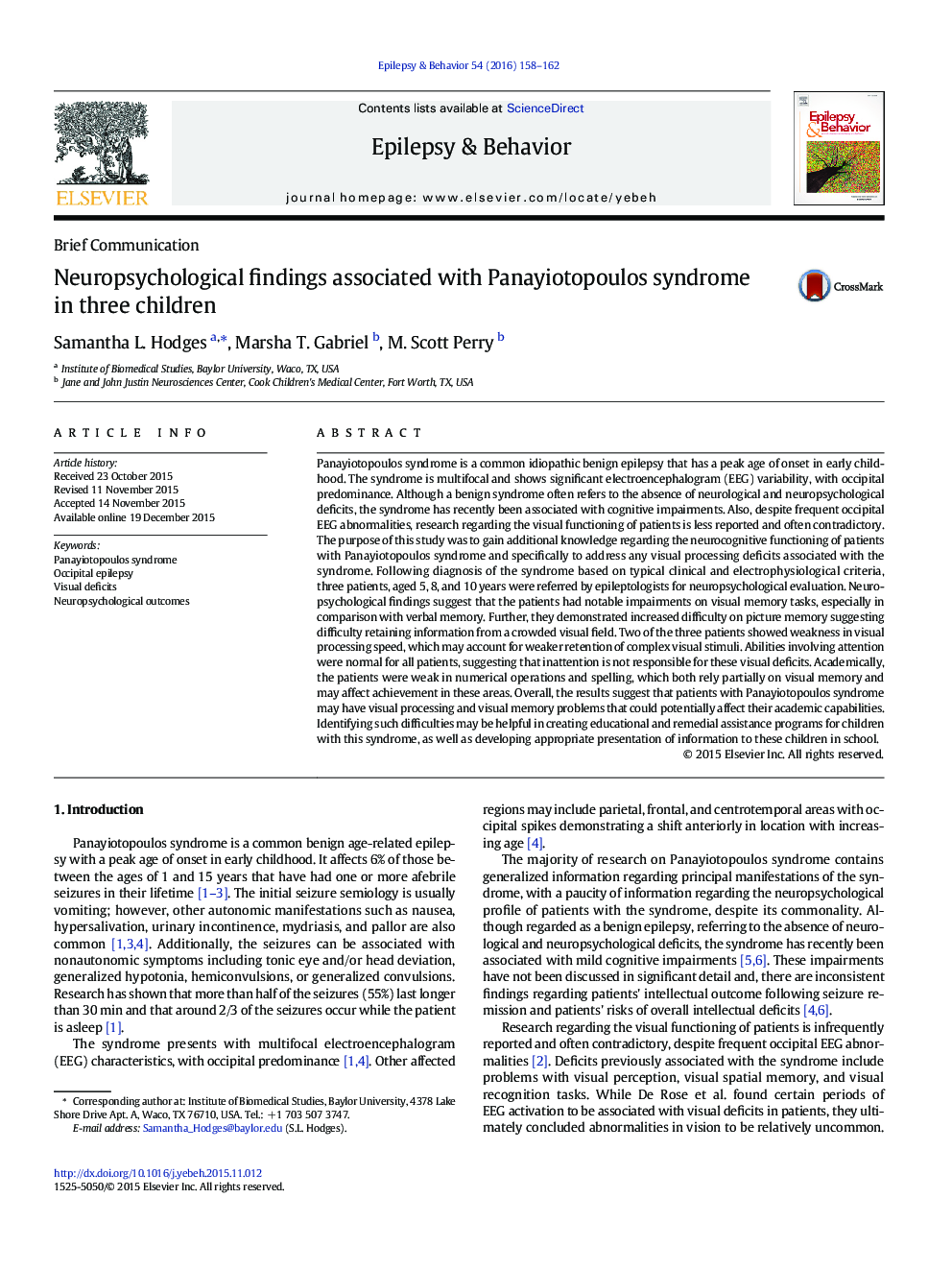| Article ID | Journal | Published Year | Pages | File Type |
|---|---|---|---|---|
| 6010775 | Epilepsy & Behavior | 2016 | 5 Pages |
Panayiotopoulos syndrome is a common idiopathic benign epilepsy that has a peak age of onset in early childhood. The syndrome is multifocal and shows significant electroencephalogram (EEG) variability, with occipital predominance. Although a benign syndrome often refers to the absence of neurological and neuropsychological deficits, the syndrome has recently been associated with cognitive impairments. Also, despite frequent occipital EEG abnormalities, research regarding the visual functioning of patients is less reported and often contradictory. The purpose of this study was to gain additional knowledge regarding the neurocognitive functioning of patients with Panayiotopoulos syndrome and specifically to address any visual processing deficits associated with the syndrome. Following diagnosis of the syndrome based on typical clinical and electrophysiological criteria, three patients, aged 5, 8, and 10Â years were referred by epileptologists for neuropsychological evaluation. Neuropsychological findings suggest that the patients had notable impairments on visual memory tasks, especially in comparison with verbal memory. Further, they demonstrated increased difficulty on picture memory suggesting difficulty retaining information from a crowded visual field. Two of the three patients showed weakness in visual processing speed, which may account for weaker retention of complex visual stimuli. Abilities involving attention were normal for all patients, suggesting that inattention is not responsible for these visual deficits. Academically, the patients were weak in numerical operations and spelling, which both rely partially on visual memory and may affect achievement in these areas. Overall, the results suggest that patients with Panayiotopoulos syndrome may have visual processing and visual memory problems that could potentially affect their academic capabilities. Identifying such difficulties may be helpful in creating educational and remedial assistance programs for children with this syndrome, as well as developing appropriate presentation of information to these children in school.
